Marshall Rolled Out the Red Carpet for this Highly Collectible Stack
Sporting dual 6550 output tubes this uber-rare custom color finish model 1987 was made in England for the U.S. market.
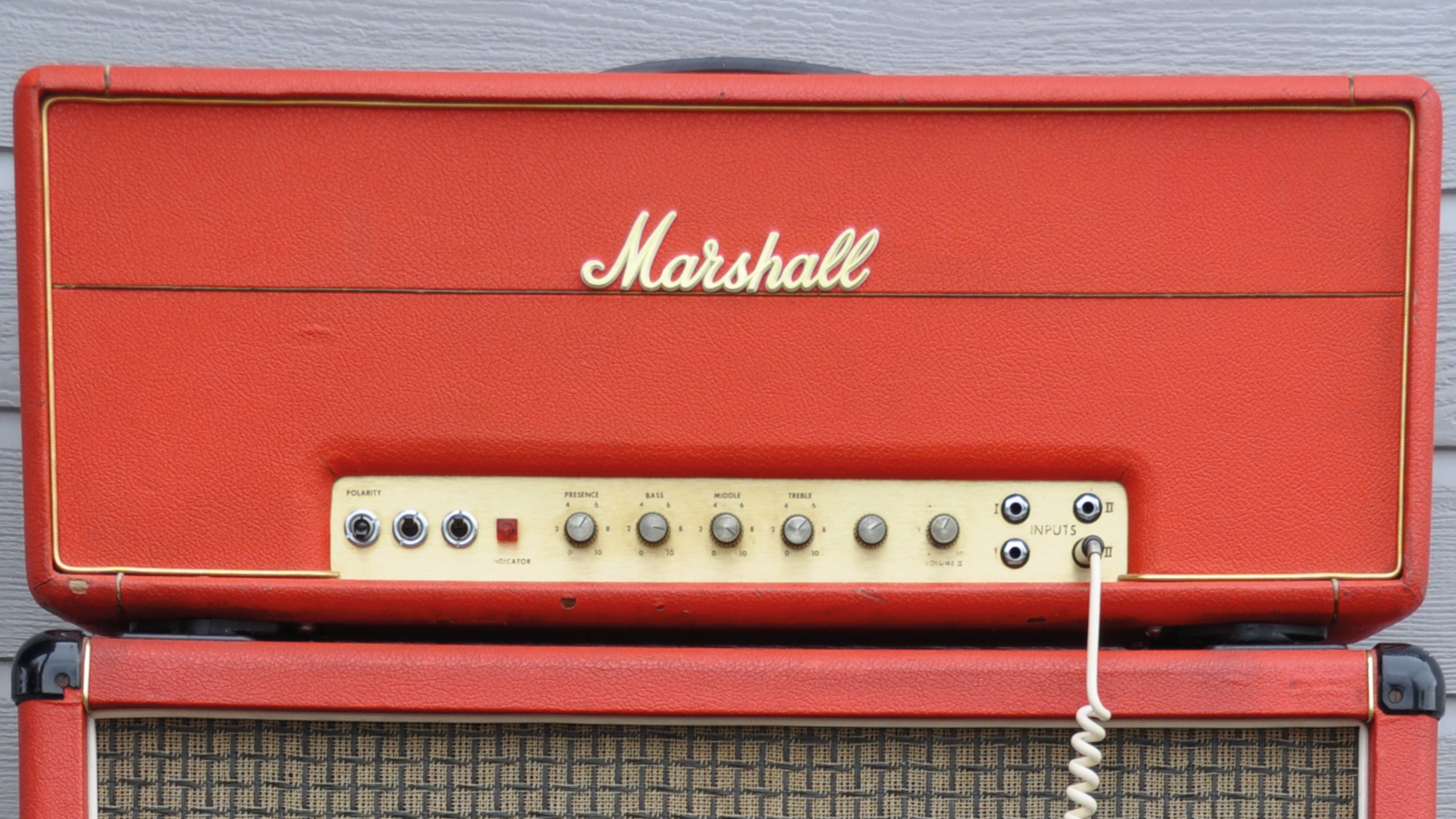
In a world of none-more-black amp stacks, there’s something irresistibly lustworthy about a rig swathed in bright, bold, stage-stealing red levant. Sure, the circuit, tubes, transformers, speakers and everything else under the hood are just the same, but a stack like this just has to sound better than the standard issue, right?
Regardless of any imaginary sonic superiority, custom color Marshalls from the golden years are extremely rare, and highly collectible. Still, we can expect this amp and cab to generate a raging aural assault defined by gut-thumping lows, fat mids, and sizzling, crackling high-end crunch – and that’s what it’s really all about. Call it classic rock, Brit rock or what have you, it’s the sound that launched a thousand hits, colloquially known as “the Plexi tone,” even when the so-called “Plexi” in question was produced well past the era of the genuine plexiglass-paneled amps.
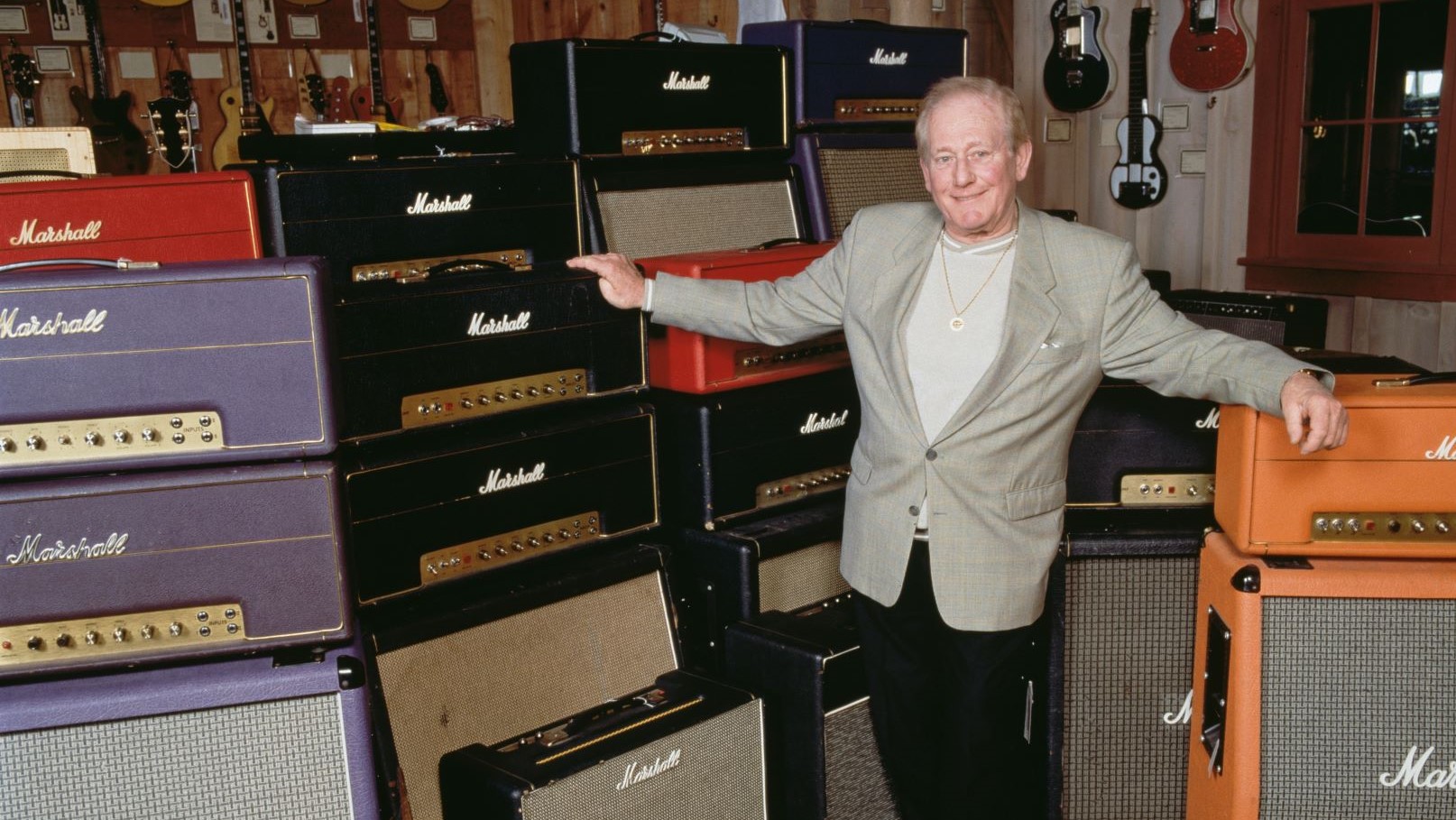
Marshall introduced its first proper production model, the JTM-45, in 1963 and used control panels back-painted in gold on those and all amps through 1969. In 1966, the model designation segued to a more powerful 50-watt JTM-50 and then to JMP-50 in late ’67 (which had by then been joined by 100-watt models), until the company began using metal control panels instead of plexiglass after 1969.
Although all of those 1963-’69 amps had plexiglass panels, the term “Plexi” is more often used to describe the ’66-’69 amps, which gained more power, a few circuit changes to make them brighter and tighter, and a solid-state rectifier in place of the previous tube rectifier, among other things.
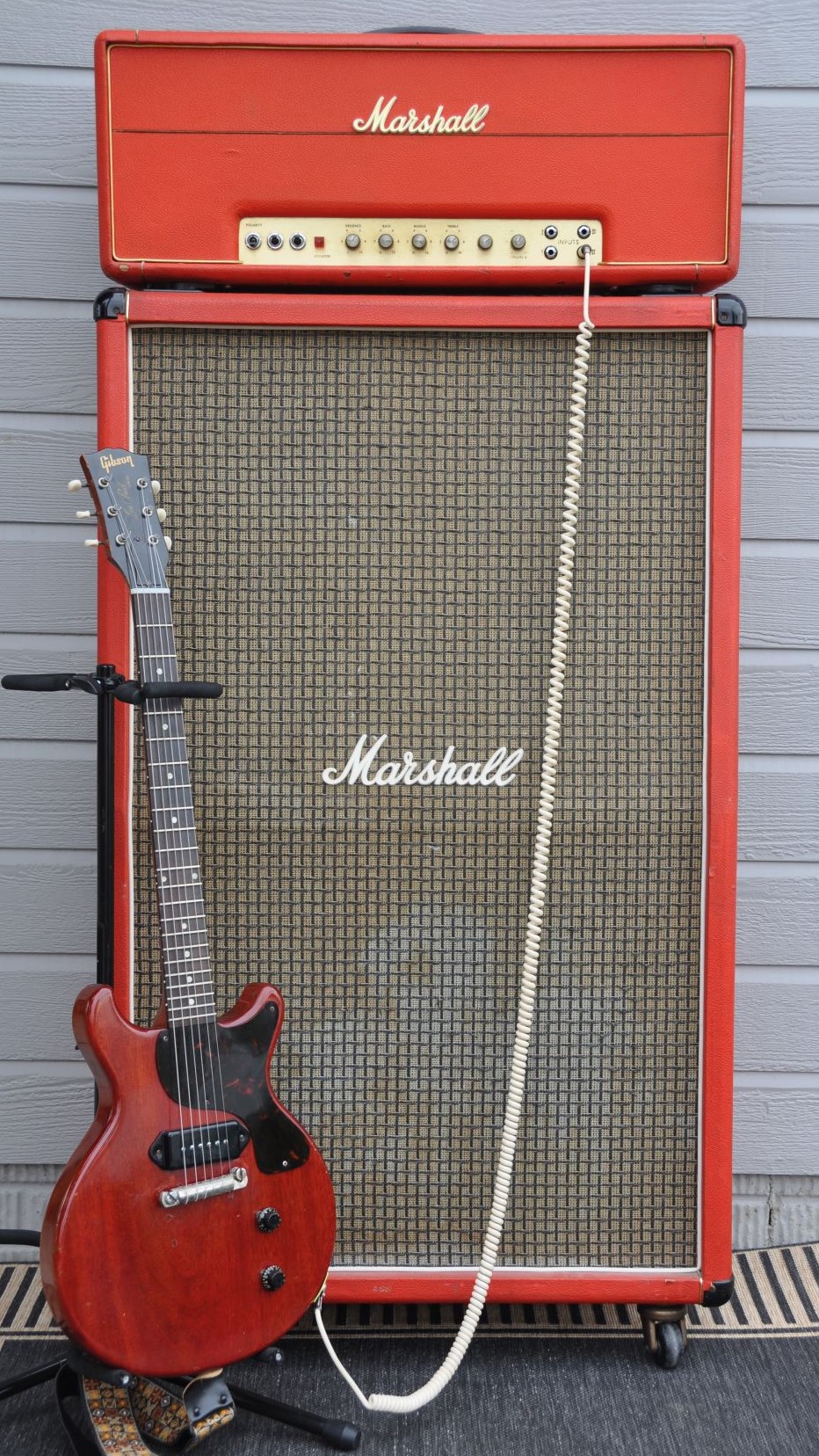
For many players, though, the term stuck around, even when the metal control panels replaced plexiglass, and even after 1974 when another significant change came about: the use of printed circuit boards. PCBs eased the assembly process by eliminating some of the hand-wiring necessary between resistors, capacitors and other components on or near the turret-board circuits of 1973 and before, while allowing more consistency from amp to amp. This ease of labor led to a savings in manufacturing costs, and the change has inspired some players – of both Marshall amps and others that use the process – to believe that PCB-loaded amps are inferior to those with fully hand-wired circuits.
Regardless of that perception, amps like this early example from January 1974 and those of a few years after were still manufactured and wired up largely by hand, and their circuit boards carried many of the same components found in their siblings of just a couple months before, including the highly desirable pale-yellow Mullard “mustard caps,” carbon-comp resistors and more. Which is simply to say, the tone is still here.
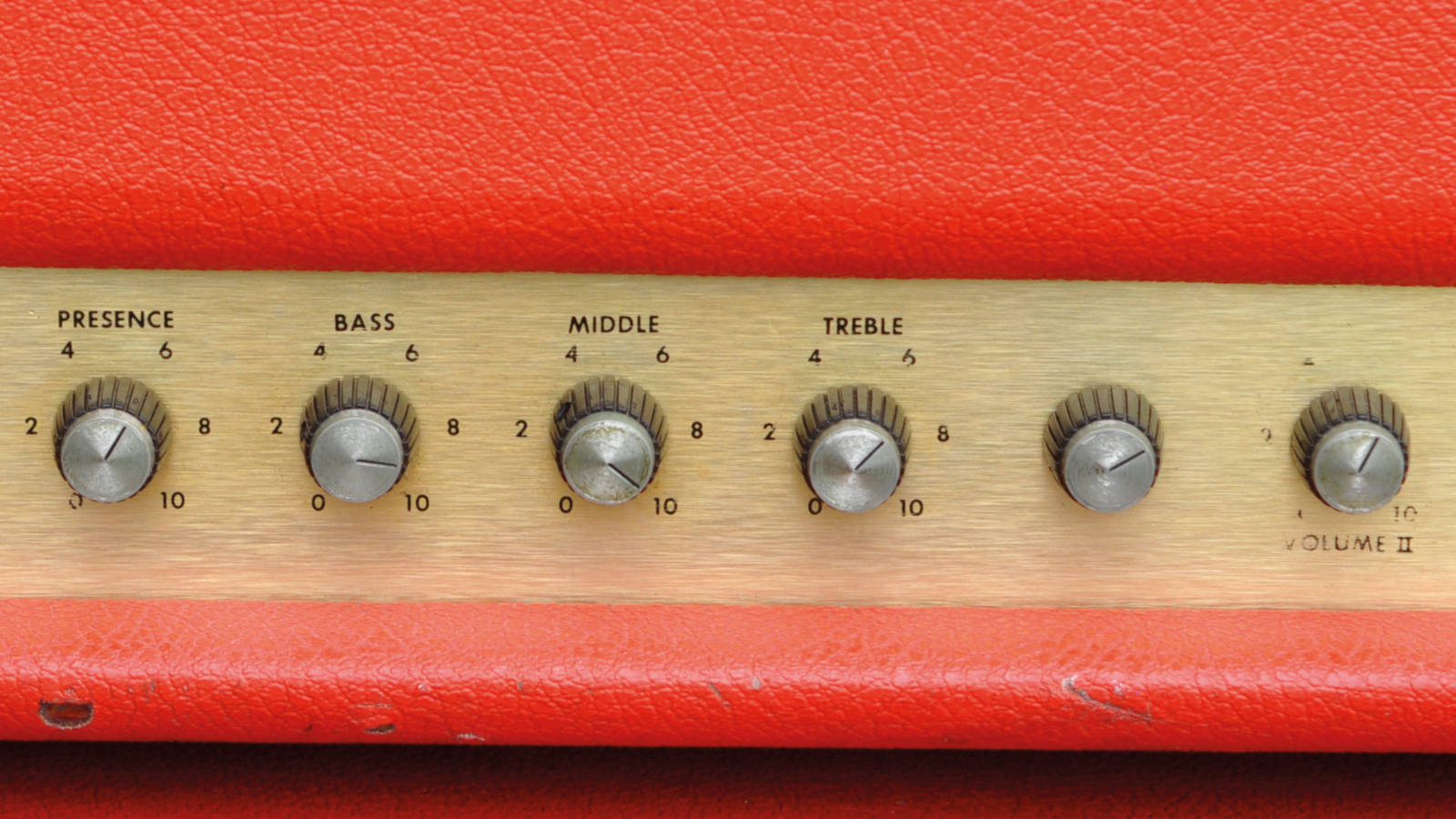
The layout on the control panel of this Marshall 50 Lead amp, a.k.a. Model 1987, is identical to that of the metal-panel, Plexi and even JTM-45 Marshalls that preceded it (and come to think of it, of the Fender tweed 5F6A Bassman upon which it was based). It controls a circuit that remained largely similar to those used in the latter two of these, chronologically speaking. Volume II and Volume I control Normal and High Treble preamp circuits, which are bassier and brighter, respectively. Some circuit changes over the years had made the latter dramatically brighter in that eternal quest of the ’60s and ’70s for more treble (or “top end,” as the British call it).
All the latest guitar news, interviews, lessons, reviews, deals and more, direct to your inbox!
To many ears today, this channel on its own sounds entirely too bright, but there are a couple of handy tricks for taming the icepick treble and achieving the scorching Marshall sizzle we all know and love. The first is simply inherent to the design: In addition to the brighter-sounding coupling cap and cathode-bypass cap in the High Treble channel, there’s a relatively large bright cap on the volume potentiometer that sends more treble into the signal at lower settings, thereby increasing the perceived brightness even further. Turning up the volume control ushers along more of the signal’s full frequency range, overbalancing the brightness with more mids and lows, while making it sound like a Marshall.
The second trick involves jumpering the two channels so they can be blended to produce optimal EQ and gain levels. This is achieved, in most cases, by plugging your electric guitar into the high input of channel one and using a short jumper cable to connect that channel’s low input with the high input of channel two.
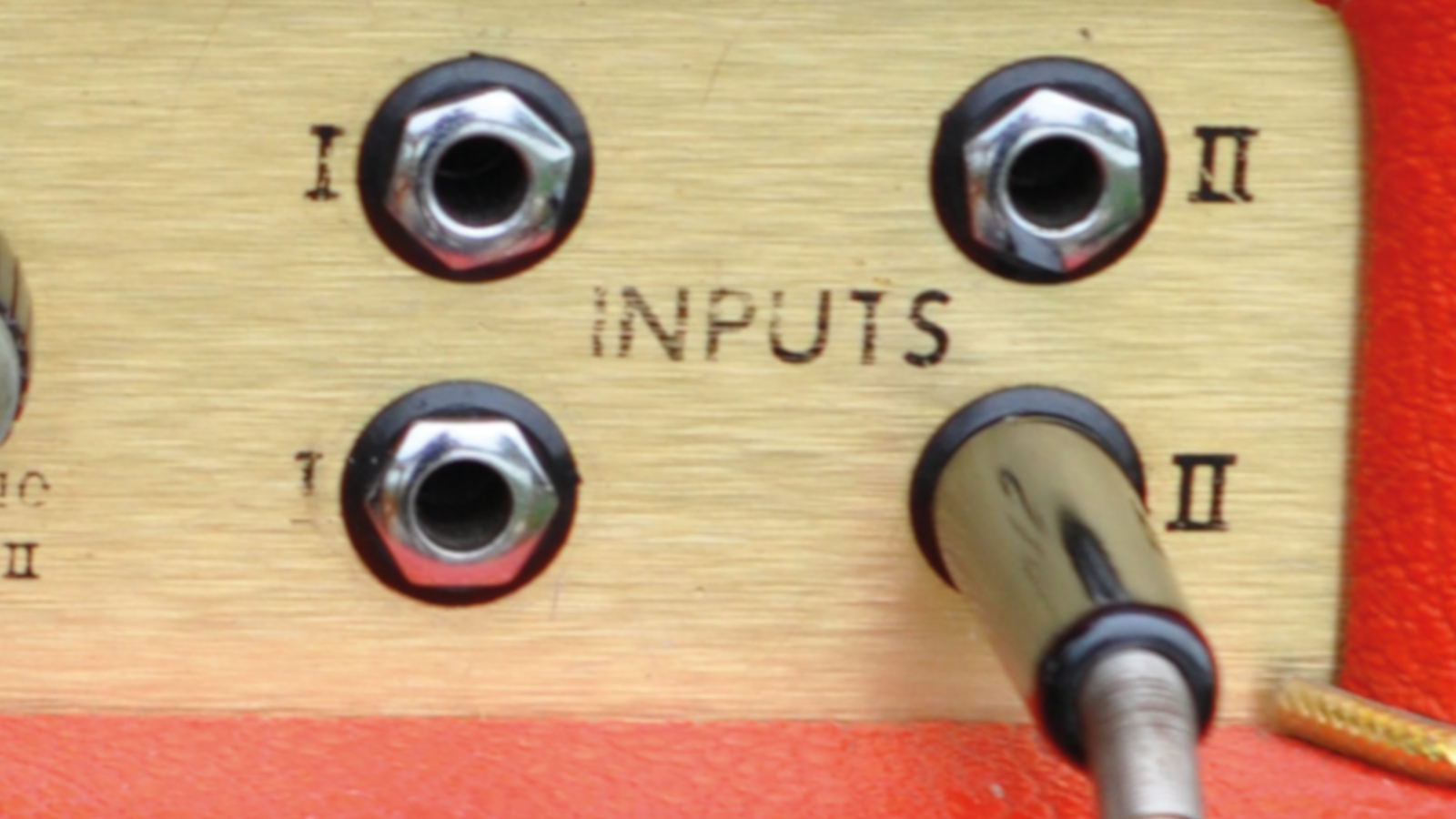
Having been made for the U.S. market, this ’74 50-watter carries a pair of 6550 output tubes, which Marshall’s American distributor started requesting in late ’72 or ’73 after good EL34s became more difficult to find on this side of the pond. Although some players have converted their 6550-carrying ’70s and ’80s Marshalls back to EL34s (a simple enough modification), many will tell you that the U.S.-distributed amps of that era sound utterly glorious just as they are, and that you’re even unlikely to notice the difference between original and converted examples side by side.
Otherwise, despite the 11 or 12 years that had passed since the line’s launch, and the many changes that took place in it over that time, this red terror still functions very much like the first JTM-45s that rolled out of Jim Marshall’s shop. There is no master volume here (that would come on some models the following year), so you have to crank it up to get the good stuff out of it. The simple fact is, these amps just didn’t sound their best at lower volumes, due to the aforementioned factors of the High Treble channel and others. That aside, they were made for rock, and rock lives at the upper reaches of the dial. Get it there, and it’s a formidable tone machine, with all the thumping punch, singing sustain and live-wire playing feel that we expect from a classic Plexi.

The archetypal rig would include a Greenback-loaded 4x12 cab or two to disperse all these sonic riches into the airwaves. However, you may have noticed that this head’s partnering cab is a taller and more unusual beast: the rare and mighty Model 1990 8x10 speaker cab, a.k.a.the stuff of roadies’ nightmares. Loaded with eight Celestion 7442 10-inch speakers and designed with a back-slanted top half for easy self-monitoring, it’ll get you heard near and far, and push significantly more air than even the more familiar 4x12.
And on top of all that, it’s red. And that has to sound utterly fabulous.
Essential Ingredients
- 50 watts from two 6550 output tubes
- Normal and High Treble channels
- Shared cathode-follower tone stage
- Custom-color red levant covering
- Model 1990 speaker cabinet with eight 10” Celestions
Dave Hunter is a writer and consulting editor for Guitar Player magazine. His prolific output as author includes Fender 75 Years, The Guitar Amp Handbook, The British Amp Invasion, Ultimate Star Guitars, Guitar Effects Pedals, The Guitar Pickup Handbook, The Fender Telecaster and several other titles. Hunter is a former editor of The Guitar Magazine (UK), and a contributor to Vintage Guitar, Premier Guitar, The Connoisseur and other publications. A contributing essayist to the United States Library of Congress National Recording Preservation Board’s Permanent Archive, he lives in Kittery, ME, with his wife and their two children and fronts the bands A Different Engine and The Stereo Field.

